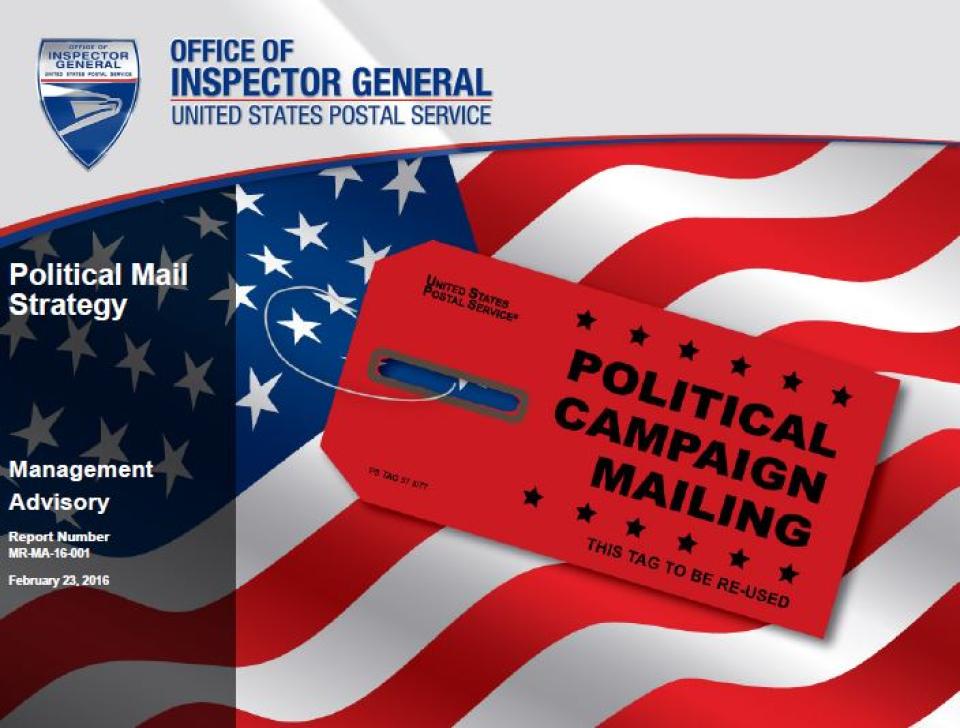Management Advisory - Political Mail Strategy
Background
The U.S. Postal Service defines political mail as any material a registered political candidate, campaign committee, or political party committee mails for political purposes. The Postal Service expedites eligible political mailings through its network.
Political candidates and organizations use direct mail in a variety of ways, including raising money, communicating and persuading, and mobilizing voters. Political campaign experts recognize that direct mail remains an important and effective tool for political mailers. One advantage of political mail over other campaign channels like television or radio is the ability to target a message to a specific household or individual.
The 2016 election season is a major financial opportunity for the Postal Service, as political mailers are expected to spend an estimated $12.3 billion on campaign advertising (such as television, radio, online, digital, print, and direct mail). This election cycle includes the presidential election as well as other key national, state, and local elections.
To illustrate the importance of this opportunity, the Postal Service has set a $1 billion political mail revenue goal, nearly double the $525 million in revenue it generated during the 2012 presidential election cycle. In fiscal year 2015, the Postal Service delivered about 1.2 billion pieces of political mail, generating $240.6 million in revenue.
The Postal Service’s Sales organization establishes and implements political mail growth efforts. These efforts include networking with major political organizations and coordinating with other internal departments to help deliver political mail more efficiently during the election cycle. The Postal Service’s website has a page dedicated to promoting its political mail products and services. Many of these efforts resulted from lessons learned during the 2012 elections.
Our objective was to evaluate existing political mail strategies and identify opportunities for the Postal Service to grow political mail.
What The OIG Found
The Postal Service has a comprehensive 2016 political mail strategy, which covers national, state, and local elections. The strategy outlines specific initiatives and strategically assigns Postal Service Sales staff to key political mail customers.
But, political mailers and related organizations have raised concerns about mail delays and service quality. The Sales staff could further contribute to the value of political mail by working more closely with Operations to identify processing issues, coordinate internal corrective actions, and ensure customers are informed when problems are resolved. These enhancements will be important as continued operational issues (both those directly related to political mailings and other service issues) could have a damaging effect on revenue when organizations select among future campaign advertising alternatives. Furthermore, providing quality service will also help preserve the integrity of the Postal Service brand and improve satisfaction for all customers, including political mailers.
What The OIG Recommended
We recommended the Postal Service develop process enhancements to quickly identify operational concerns, coordinate internal corrective actions, and communicate resolution to customers.

